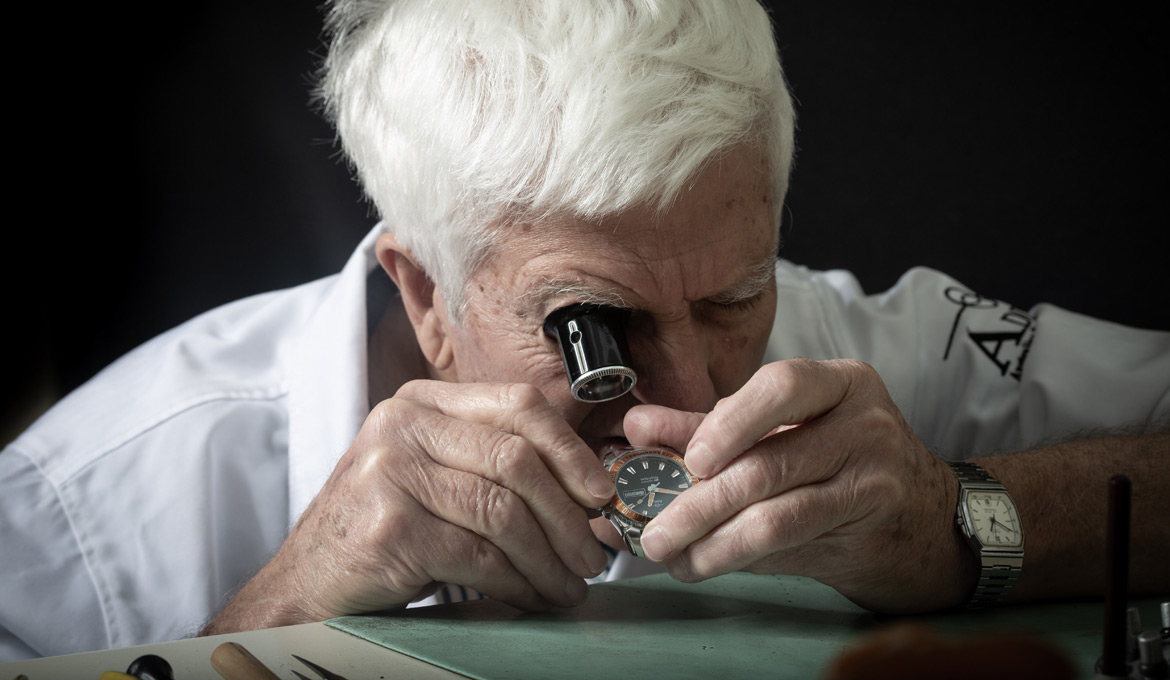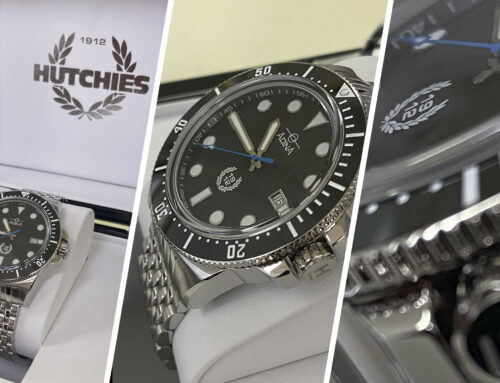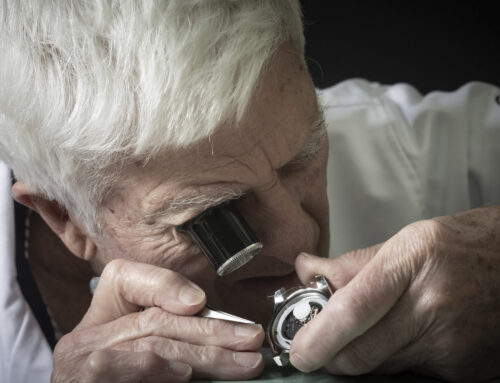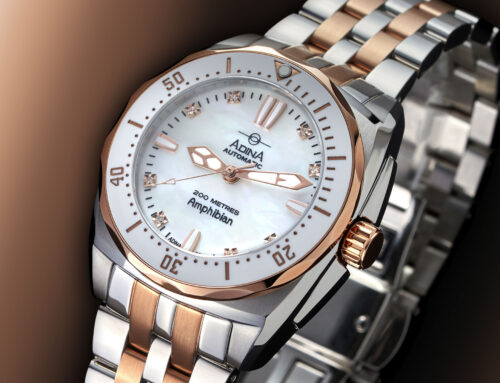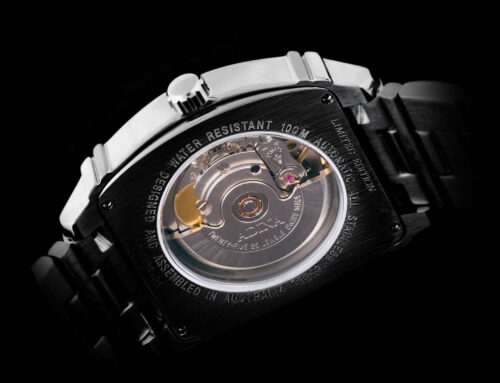A bit like death… hmm that’s a bit morbid – well let’s say taxes – one of life’s inevitabilities is that your watch will need to be serviced. If you own an Adina Watch this will be a pretty rare occurrence (our watches have been designed and crafted to be pushed to the limit!). However, if you’re a quartz-only person, you will face that moment when the battery runs out – which is usually around the 2-3 year mark.
For some, that’s a slap in the face (if not the wrist).
Like cars and properties, the expense associated with a wristwatch doesn’t end the moment you strap it on. The more expensive the Adina, the more complicated it usually is. Which means there are more components to look after.
“Service intervals can vary model to model but in the main, manufactures recommend a service every three to five years to keep the timepiece in good condition,” explains Jason Valinotti, head of technical services at Adina Watches.
So, where ought you take your favourite Adina when it needs a little “TLC”? What are the signs that something needs immediate attention and do you ever try some DIY watchmaking? Read and with a bit of luck we will answer all those questions and more!

Adina Quartz Watches
Adina battery operated watches are fitted with Swiss Made quartz movements that areregulatedby quartz and are relatively simple, yet very efficient creations. When they stop working, for the most part you can bet your bottom dollar it’s because of one thing: the battery. It will have either run out or it’s simply getting to the end of its life, and therefore it will need to be replaced.
Due to their simple make-up, this is an easy and cheap thing to fix – all you need to do is get the battery replaced, so head to your nearest jeweller preferably an Adina stockist and the problem is solved for around $20. As a recommendation if you watch is 100m or 200m rated we would always encourage a water pressure test on top of the battery.
Another issue that can arise with quartz watches is when the buttons or pushers stop working properly. This is usually a wear and tear issue – dust and dirt can accumulate around the tiny spring that allows the pushers to do their job. It may not be as straightforward as that though, so if this is the case for your watch, a full service will be needed to ascertain whether that is indeed the problem – if it is, the springs will likely need replacing. If this is the case then the Adina technical support centre is where it needs to end up. Either send it to us your self or ask your local stockist to help.
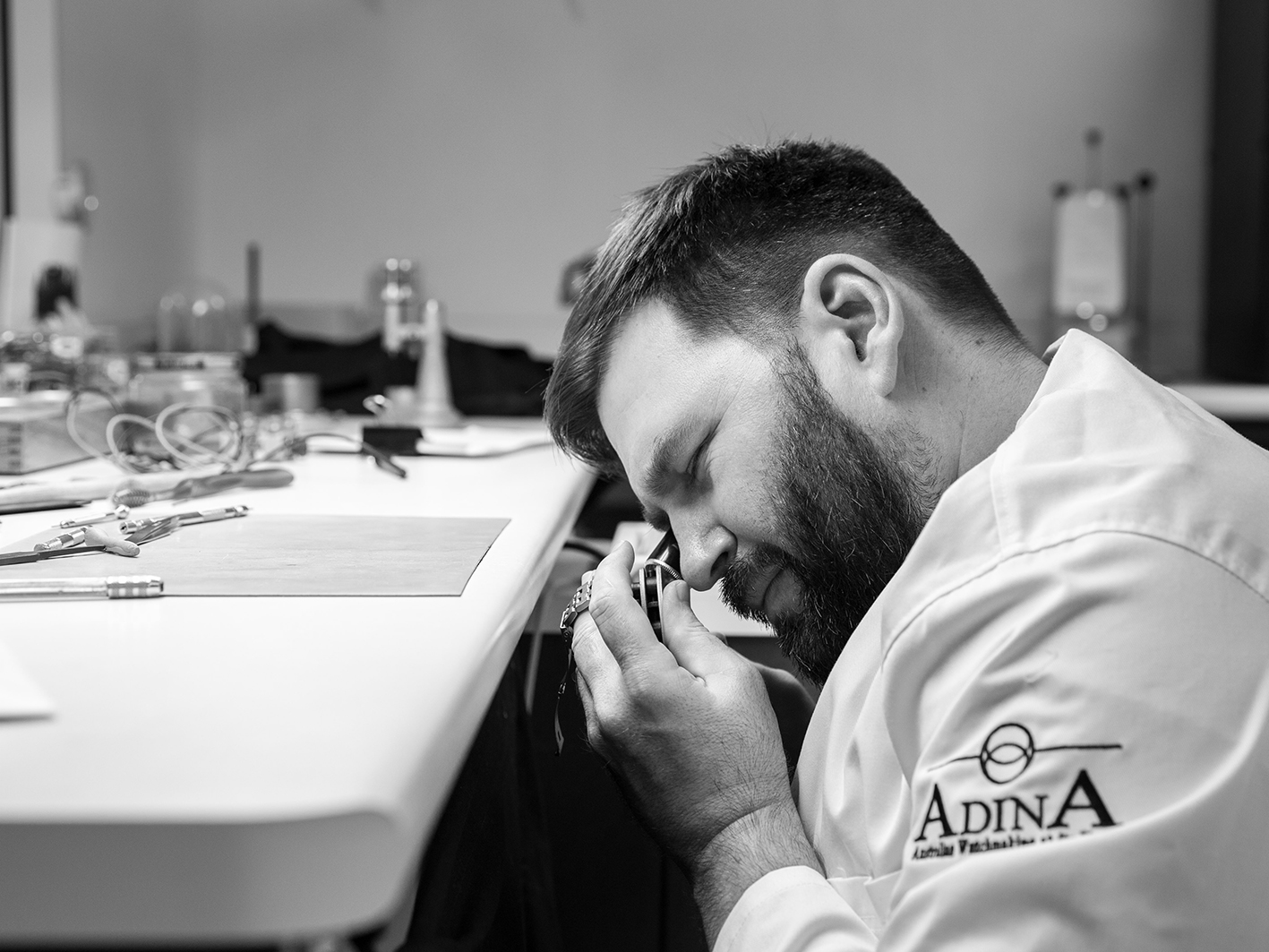
Adina Mechanical Watches
With mechanical watches, there are more individual parts and, therefore, more things that can potentially go wrong. In terms of symptoms, you’re most likely to notice that time-keeping has slowed or is getting faster. And the most likely cause: lack of servicing.
“You have to treat it like your car, look after it and it will look after you!” says Bob Menzies, founder of Adina Watches.
“There are over 180 parts in a mechanical watch that need lubrication. If you don’t bring your watch in every four-to-five years then parts of it can wear, which can lead to losing or gaining time caused by lack of oil. We have seen many watches over our 50 year history and generally when one of our watchmakers has had to determine a quotation, the majority of problems are caused by dry oil.”
So what are your options?
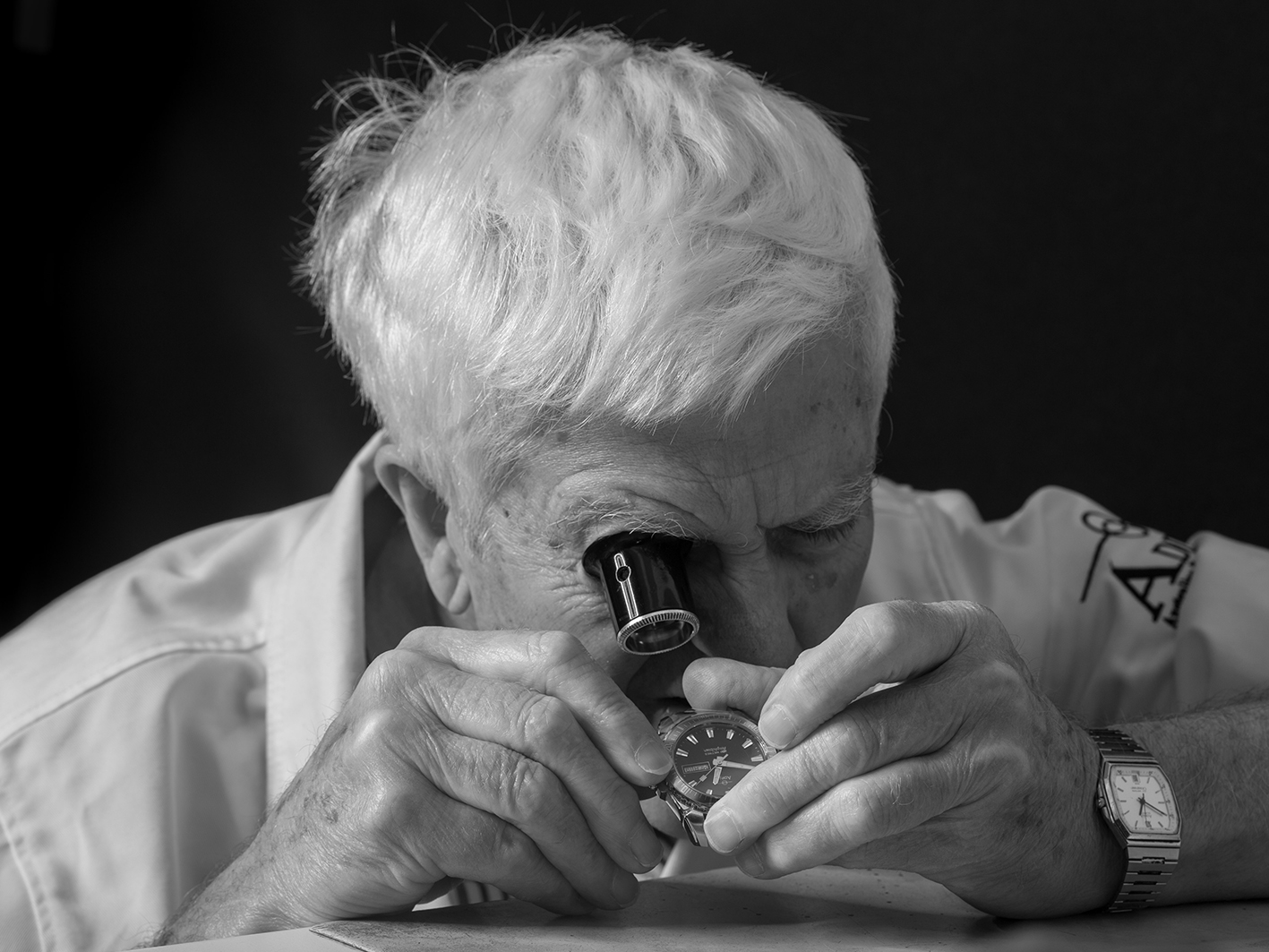
A Full Service
The solution more often than not, Valinotti says, is a full service. “We look at all aspects of the watch to ensure it is performing as we intended it to, when we manufactured it however long that was ago,” he explains. If you say yes to a full service (and remember this is only ever a recommendation, you are under no obligation) ask whether the movement will be entirely dismantled and cleaned.
“If parts are worn, these will be replaced and the movement to be re-assembled and re-lubricated,” says Valinotti. We will also replace your crown and pushers if they have been marked down on the service document as being worn. The seals and gaskets will have been replaced to ensure water resistance and, when it comes to polishing, you’ll be able to see easily if the case and bracelet has been buffed as any small scratches will have disappeared.
“We also place the watch on a five-day time-keeping and power reserve test [applicable to automatic and manual wind watches] to ensure the tolerance is as expected,” says Valinotti. “The watch is then pressure- and water-resistance-tested, undergoes three separate stages of thorough quality control and backed up by our work shop warranty.”
If any of those things haven’t happened then your watch hasn’t been given a full service.
There are other problems that require a full service, and they usually read like a short horror story to most watch collectors. Brace yourself because these are the most common: a rattling or a strong vibration inside the watch (especially if the watch has been knocked or dropped); the glass being smashed (shards of glass can end up within the movement); grinding of the crown when changing the time or winding the watch; and condensation that appears and disappears on the sapphire crystal, which is a sign of water damage from not screwing down the crown properly or seals not being replaced in a timely manner.
Not every bump and bruise requires a full service, however.
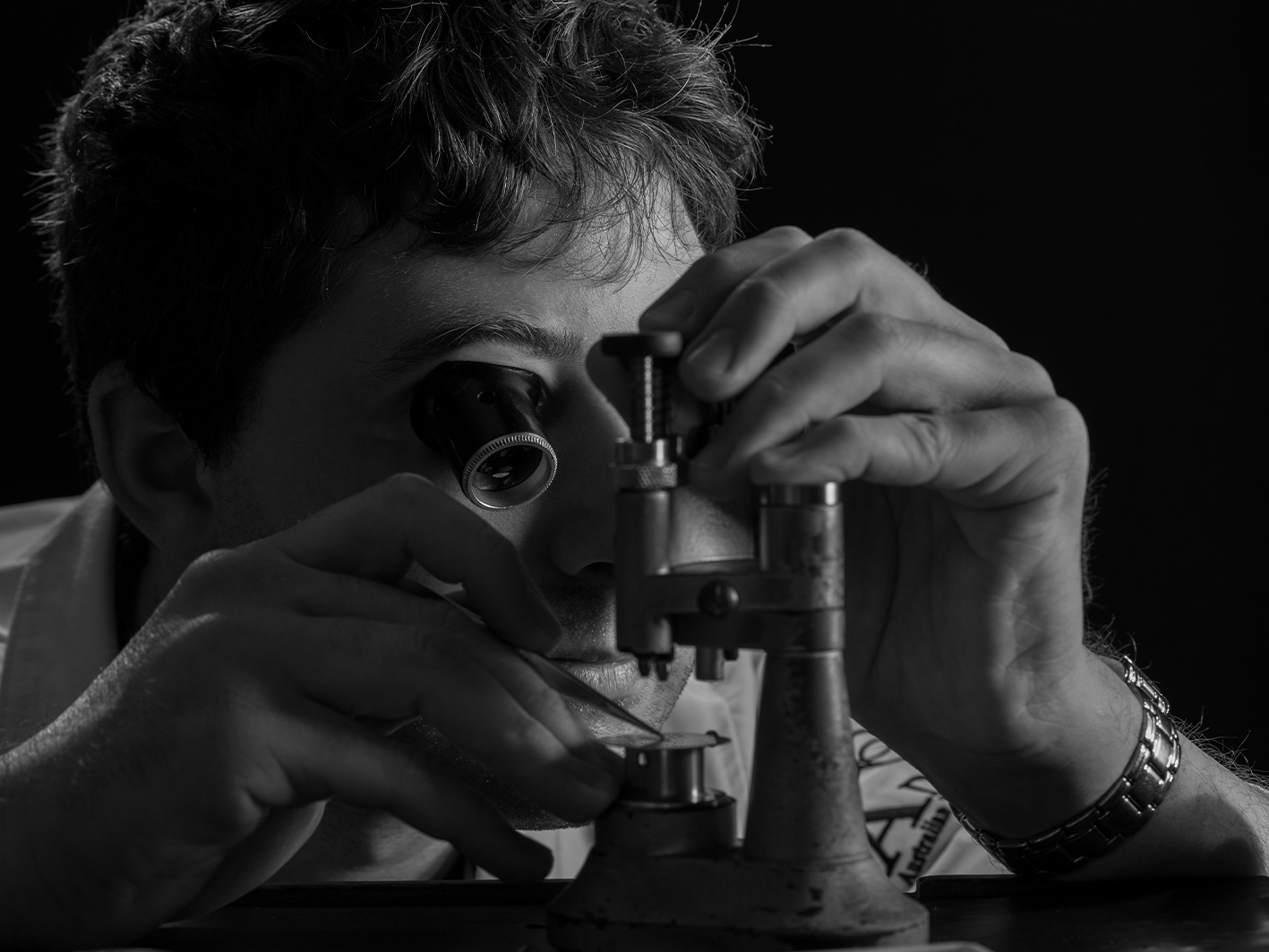
What To Look For From The Place You’re Getting It Serviced
Many luxury watch brands, will insist you take your watch back to them for service or repair. Adina also recommends this but is still very happy to support the Australian watchmaking industry so will happily supply genuine parts to qualified watch makers so, if you’re going to opt for a third party then it’s all about accreditation. You need to be assured the person pulling your precious Adina apart and putting it back together knows exactly what they are doing.
“We handle a myriad of watch repairs from a battery exchange and water resistance reseal to a full service and overhaul,” says Valinotti.
Bob Menzies explains “Our watchmakers are accredited and have many years of experience, and that is also generally the case with the an Adina watch retailers – they have experience over many years of working with us and will know what to undertake in repairing and servicing to a certain level before it may have to be returned to the us.”
It’s when you start eschewing retailers in favour of service centres that you need to have your wits about you. “Look for accreditation, I know people talk about ‘time at the bench’ and while that is great in terms of experience, you need to know your watchmaker has had fundamental training and another great thing in the modern era are Google reviews,” says Menzies.
Dos And Don’ts
Do take your watch to be given a once over every four-to-five years, even if it’s not showing any signs of wear and tear. “Putting movements and full services to one side, you should still bring your watch in every four years or so because there are things such as gaskets and seals made from rubber, which deteriorate naturally over time, but they would only cost around $50 $100 depending to get replaced,” says Valinotti.
Don’t forget to maintain your automatics even when you’re not wearing them. You need to manually wind any watch you’re not wearing every four to five days to ensure the oils don’t dry out. A watch winder is a great investment if you have a few automatics in your collection.
Do ask questions. Ask the watchmaker what his credentials are, what exactly he intends to do to the watch, and what parts will need to be replaced. It’s not only a reassurance for you, it’s a simple way of finding out how qualified the watchmaker is.
Don’t always go for the quick and easy option. “While it may seem quicker and more cost effective to simply replace a damaged part, the damage can often be more complex than simply one worn or damaged part,” says Valinotti. “To find and fix the damage, the watch may need to be dismantled, cleaned and re-assembled. That’s ultimately a service in itself and does of course take a significant amount of time and care.”
What Can You Do At Home?
DIY watch repairs is an area of much debate. “We would not recommend any type of repair is attempted at home. Watches are complicated and require specialist tools, equipment and skills in order to carry out a reliable repair. We don’t advise our customers to try anything at home. Even a strap change can lead to a badly scratched case if something slips,” Menzies says. “If your watch is water-resistant and has a rubber strap then you could get a toothbrush and some warm water and soap to clean the strap, but we can give it an ultrasound and steam clean for a small price.”
In other words, put that tool kit you bought on Amazon away. Unless you’re a watchmaker, chances are you will do more damage to the watch and likely void its warranty.
Let the experts do what they are paid for and your watch (and, by extension, your bank balance) will be very grateful indeed.

